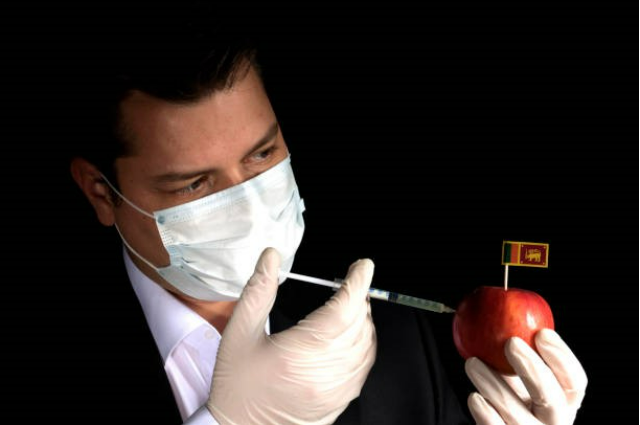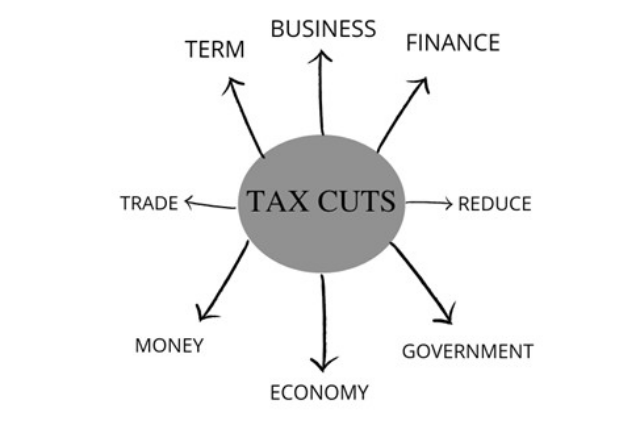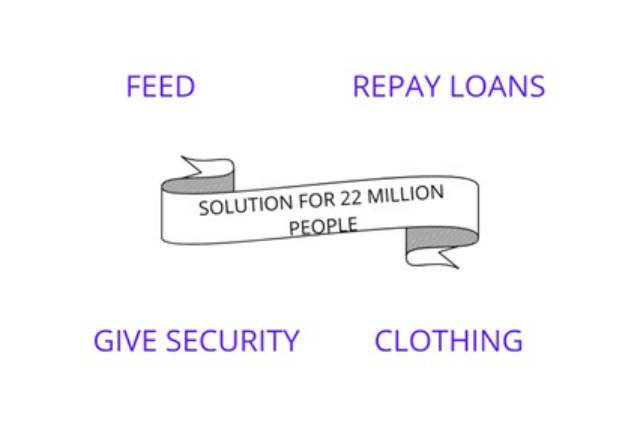
ABSTRACT:
"The financial crisis should not become an excuse to raise taxes, which would only undermine the economic growth required to regain our strength." - George W. Bush
Sri Lanka is undergoing a severe economic crisis and is at the risk of devolving into a failed state. The country’s foreign reserves are fast depleting, falling from $5 billion in 2019 to 1.8 billion in 2021, despite high inflation and a debt-to-GDP ratio of 110 per cent. From health to defense, the nation is attempting to reorganize its affairs. Meanwhile, other speculations about the origins of the crisis have evolved, ranging from Covid to debt-trap diplomacy (1). The debt trap of China and Covid is marketed as the source of the crisis. They are, however, only a catalyst; the debt trap sponsored the cause, and Covid was the spark that ignited the fire. The root cause of the crisis lies at the heart of the country. The country’s people were persuaded to offer legitimacy and authority to an aristocratic political system Using the identity crisis and insecurity. This mechanism triggered the Butterfly and Domino effect.
A severe shortage of foreign currency has left Rajapaksa's government unable to pay for essential imports, including fuel, leading to debilitating power cuts lasting up to 13 hours. Ordinary Sri Lankans are also dealing with shortages and soaring inflation. “Sri Lanka is a classic twin deficit economy,” said a 2019 Asian Development Bank working paper. “Twin deficits signal that a country’s national expenditure exceeds its national income, and that its production of tradable goods and services is inadequate.” But the current crisis was accelerated by deep tax cuts promised by Rajapaksa during a 2019 election campaign that were enacted months before the COVID-19 pandemic, which wiped out parts of Sri Lanka’s economy.
Sri Lanka is often portrayed as a country that fell into a debt trap as a result of public investment projects financed by China. One such investment project was Hambantota port, which was leased to China Merchant Port Holdings Limited (CM Port) for 99 years for $1.12 billion in 2017. This project is largely the reason why Sri Lanka is widely cited as a clear example of getting trapped in Chinese debt and being forced to hand over assets with national and strategic importance to China. The general belief seems to be that Sri Lanka was unable to pay off the loans obtained from China to construct Hambantota port in the first place, and therefore had no choice but hand over the port to Chinese control to pay off the debt.
BACKGROUND
- Bankrupt Srilanka asks Citizens abroad to send Home cash.
- Fitch places 13 Srilankan banks on rating watch negative.
- Srilanka defaults on $51 billion external debt.
- 5,00,000 have fallen into poverty in recent days.
- Reasons for Srilankan Economic Crisis:
→ POLICY
→ FATE
→ POLITICS
→ CHINA - Mismanagement of Government's policy. It imports more than it exports. It spends more than it earns.
- Trade deficit as for Dec 2021, accounts to $1.09 billion.
- Budget deficit as per 2021, 12.2 % of GDP.
- Double Debt Expanded its debt, Colombo borrowed heavily from countries and agencies.
- Debt to GDP Ratio is 111%. It owes more than it produces.

INTRODUCTION
People queue outside a state-run supermarket to buy essential food items in Colombo on September 3, 2021 as Sri Lanka began imposing price controls on essential food from September 3 after using a state of emergency to seize allegedly hoarded stocks of sugar and rice. Sri Lanka’s government declared an economic emergency last week amid rising food prices, a depreciating currency, and rapidly depleting forex reserves (2). President Gotabaya Rajapaksa has called in the army to manage the crisis by rationing the supply of various essential goods.
The Sri Lankan government has blamed speculators for causing the rise in food prices by hoarding essential supplies and has declared an economic emergency under the Public Security Ordinance. The army has been tasked with the duty of seizing food supplies from traders and supplying them to consumers at fair prices. It has also been given the powers to ensure that forex reserves are used only for the purchase of essential goods. The government has refused to end its aggressive push for complete organic farming claiming that the short-term pain of going organic will be compensated by its long-term benefits. It has also promised to supply farmers with organic fertilizers as an alternative. Further, Sri Lanka’s central bank earlier this year prohibited traders from exchanging more than 200 Sri Lankan rupees for an American dollar and stopped traders from entering into forward currency contracts.
RECENT ECONOMIC SHOCKS

- Tax Cuts announced by the President lead to the reason for Crisis.
- Srilanka is facing its worst economic crisis in decades after foreign exchange reserves went down by nearly 70% in January 2020.
- Foreign reserves as of February 2022 was merely $2.3 billion and the debt of payments for the rest of the year is $4 billion. Total $51 billion external debt was defaulted.
- Difficulty in importing commodities like Fuel, Food and Medicines.
- APRIL 26, 2021: Srilanka banned all chemical fertilizers in "Shortage of Dollars" for saving Foreign reserves by banning imported Fertilizers.
- JUNE, 2021: Srilanka was forced to import rice. White Rice, being a staple food, has fallen by 50%.
- JULY, 2021: Srilanka banned imports of luxury goods.
INSIGHTS
- In Last three Years, Sinhalese sentiments were kept in mind, while making decisions involving National and International Affairs. Avoiding closer ties with India rather Rajapaksas moved closer to China. China ensured that Colombo went Bankrupt.
- In 2019: Srilanka's TOURISM SECTOR was suffering. Tourists completely stopped arriving. Srilanka depends 13% of GDP in Tourism. It was also a major source of Foreign Currency.
- In 2018: It was 2.3 million.
- In 2020: Srilanka managed to welcome just 173,000 tourists.
- In 2021, Srilanka's revenue from Tourism was down to $2.8 Billion.
- Late, 2021: The revenue from Agricultural production which accounted for 8% of GDP had fallen Revenue from Tourism and Remittance had fallen. Foreign Agencies were not lending money to Srilanka.
WHAT DID COLOMBO DO?
- In JUNE, 2021: Bangladesh helped out cash-strapped Srilanka with a $200 million loan.
- In FEB, 2022: Srilanka gets urgent $500 million Indian loan to pay for oil.
- The IMF cannot help due to "Unsustainable debt levels'' which led to "Solvency" issues. But, purchasing power plunged. VALUE: $1 = 326 SRILANKAN RUPEES.
- Currency has plunged → 32%
- Inflation → 30.2%

HOW MUCH MONEY DOES SRI LANKA HAS NOW?
LESS THAN $1.94 BILLION:
- DEBT PAYMENT: Due in 2022, $8.6 Billion.
- INTEREST PAYMENT: Due in 2022, $78.2 Million.
- IN APRIL: It announced a NationWide Emergency.
WAY FORWARD:

Many believe Sri Lanka’s economic relations with China are a principal driver behind the current crisis. The United States has termed this occurrence debt-trap diplomacy to increase political leverage. However, loans from China accounted for only about 10 percent of Sri Lanka’s total foreign debt while Japan accounts for 11 percent and 30 percent borrowing is attributed to international sovereign bonds. Defaults over China’s infrastructure related loans to Sri Lanka, especially the financing of the Hambantota Port, are cited as reasons contributing to the crisis. However, it is the opposite (3). The port was running at losses; so, Sri Lanka leased it out for 99 years to the Chinese Merchant’s Group, which paid Sri Lanka $1.12 billion. Thus, the Hambantota Port fiasco did not contribute to this economic crisis, but actually bolstered Sri Lanka’s foreign exchange reserves by $1.12 billion. Furthermore, despite the allegation that China is providing Sri Lanka with a $1.5 billion swap and a $1.3 billion syndicated loan, China is also considering a $1.5 billion credit facility and a separate loan of up to $1 billion for Sri Lanka to overcome this precarious situation. It seems that Sri Lanka’s economic relations with China are, in fact, beneficial as opposed to detrimental, which some claim.
THE announcement of a temporary default on foreign loans is not a repudiation of foreign debt. The government has assured all creditors that debt repayments will be made with interest for the delay period. It further guaranteed that debt restructuring proposals can be presented to the creditors for their consideration and they will be consistent with IMF recommendations (4). The government is also promising ‘good faith’ discussions with the countries that have lent them money. While Sri Lanka’s economy is bankrupt, the timing of the announcement is a political decision aimed at pressuring the population into accepting the International Monetary Fund’s terms.
The Lankan prime minister Mahinda Rajapaksa’s handling of the situation has been less than inspiring and reflects on the adverse impacts of dynastic rule. In an address in the past week, the prime minister cynically tried to pin the blame for the economic crisis on the protest movement, declaring that with every second of protests on the street, ‘our country loses opportunities to receive potential dollars.’ He ironically denounced the protests as a ‘threat to democracy’ and, in a delicately disguised threat, recalled how previous governments used the military and death squads to neutralize opposition in the past.
CONCLUSION

As a retaliation, the Socialist Equality Party has outlined a socialist programme of action for the working class to secure its legitimate interests. The programme aims at organizing the rural poor and the oppressed to contest for their justifiable demands, topple the autocratic power of the government, abolish detrimental policies for the common mass, repeal repressive laws and ensure social rights. The Socialist Equality Party has defined a series of policies, including the repudiation of foreign debt. The working class has not incurred this debt and must not be forced to pay for it by compromising on their lifestyle, both financially and socially. The Socialist Equality Party demands the confiscation of the illegal wealth of the rich and elite and the nationalization of banks and major corporations, under the democratic control of the working class, to ensure the social needs of the majority are met.
There are two major inter-related issues responsible for regressing Sri Lanka to where it is now — (a) political immaturity, poor decision making, the weakening of democratic institutions, the continuing of the brutal civil war, weak and corrupt governance with lack of accountability and ineffective leadership by the Rajapakshe dynasty; and (b) financial mismanagement, including but not limited to huge tax exemptions, significant unused debt obligations that comes with very difficult terms and conditions and overall short sightedness of the government (5). None of the governments undertook any efforts to institutionalize democracy or any fundamental economic or social reform, or strengthen the institutions of accountability.
To reverse the current situation, the International Monetary Fund issued its assessment of the country at the end of the past month, along with a draconian austerity programme. It included raising income and value-added taxes; increasing fuel and electricity prices; instituting a market-determined flexible exchange rate; the commercialisation and privatization of state-owned enterprises; deep inroads into state expenditure; and the further slashing of price controls and subsidies. Whether this will alleviate the situation or add fuel to the fire by angering already suffering citizens because of high prices and the shortage of resources is a conundrum.
Other than the adversarial shock of Covid-19, all other concerns swamping Sri Lanka are creations and outcomes of the corrupt successive governments with a flawed approach to governance, economy, favoritism and leadership (6). To overcome this precarious predicament, Sri Lanka has to institutionalize democracy, denounce dynastic rules, institute an effective and populist government with accountability, restore beneficial economic policies and ensure a level playing field for all classes.
. . .
KEY DEFINITION:
- TRADE DEFICIT - A Trade deficit occurs when a country's imports are greater than its exports, during a given time period. It is also referred to as a NEGATIVE BALANCE OF TRADE.
- BUDGET DEFICIT - A Budget deficit occurs when the government spends more in a given year than it collects in revenues, such as taxes.
- DOUBLE DEBT - The situation where the suspension of External debt payments is a last resort for the country. The country lost its ability to repay foreign debts due to debt on debts.
- DEBT OF PAYMENTS - The Act of paying back money which has been borrowed.
- DEFAULT IN PAYMENTS - Default is the failure of a loan according to the teams agreed to in the promissory note.
- REMITTANCE - A remittance is a payment of money that is transferred to another party.
- IMF - The International Monetary Fund [IMF] works to Achieve sustainable growth and prosperity for all its 190 member countries.
- NATIONWIDE EMERGENCY - A situation in which the President exercises their emergency powers due to disasters, dangers - authorizing them to secure and mobilize needed resources.
REFERENCES:
- Samrat Sharma,2022, Sri Lankan economic crisis explained in five charts, India Today.
- Neil DeVotta, 2022, Majoritarian Politics in Sri Lanka: THE ROOTS OF PLURALISM BREAKDOWN, WakeForestUniversity.
- Anonymous, Political Stability of Sri lanka, Economic Intelligence Unit.
- Uditha Jayasinghe, 2022, Sri Lankan parties seek interim govt with new PM as IMF talks loom, Reuters.
- Siri Gamage, 2022, Democracy in Sri Lanka: past, present and future,Asian Studies Review.
- Sri Lanka on the edge as debt burden mounts - Business Standards Journal.
